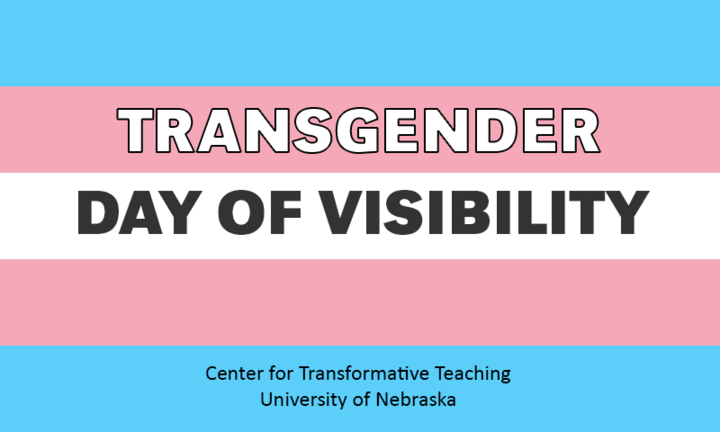Transgender Day of Visibility on March 31st is an annual celebration of the contributions of transgender and nonbinary people while also acknowledging the ongoing challenges they face. As an instructor, we encourage you to think of ways that you can better support your transgender and nonbinary students. Some things that you might consider incorporating into your courses include:
- Provide flexibility. The introduction of anti-LGBTQIA+ legislation at the national and state level can have a significant impact on the mental health of impacted students. Providing flexibility in attendance and due dates without requiring documentation can reduce stress and allow students to complete their course work when they have the energy available. This course policy resource guide provides examples of course policies with different levels of flexibility.
- Share your pronouns and respect students' pronouns. On the first day of class, share your pronouns when you introduce yourself. Include your pronouns online wherever your name appears, including in your email signature, Firefly, and Zoom. Provide the opportunity for students to share their pronouns but do not require them to share. Students may be questioning their gender identity or not feel comfortable sharing their pronouns with all of the people in the class. For more information on best practices related to utilizing students' pronouns in the classroom and gender-inclusive teaching more broadly, see this resource from Vanderbilt University.
- Do not make assumptions about students’ gender identity or sexual orientation. Do not assume that students are cisgender and heterosexual. Also, do not assume that students who look a certain way are part of the LGBTQIA+ community. Avoid using gendered language when referring to students (e.g., ladies and gentlemen, guys, etc.) because you could misgender students or make some students feel excluded.
- Briefly apologize if you make a mistake and move on. If you misgender someone or make an insensitive comment, briefly apologize as soon as possible and move on and work to not make the same mistake in the future. Extended apologies or processing your own feelings about your actions can further burden the people impacted by your words or actions. The best apology is changed behavior.
- Connect students with support. Include links to the LGBTQA+ Center, the Chancellor's Commission on the Status of Gender and Sexual Identities, and Counseling and Psychological Services in your syllabus. Provide a link to the Gender Inclusive Restrooms Map or include where the nearest all-gender restroom is located for in-person classes.

Conceived by Monica Helms, an openly transgender American woman, the Trans flag made its debut in 1999. The light blue and light pink are meant to symbolize the traditional colors for baby girls and baby boys, respectively. Meanwhile, the white hue is meant to represent members of the movement who identify as intersex, gender-neutral or transitioning. According to Helms, the flag is symmetrical, so 'no matter which way you fly it, it is always correct, signifying us finding correctness in our lives.' Source: Outright International"> March 31 is Transgender Day of Visibility. Here are five key ways to support your transgender and nonbinary students.
